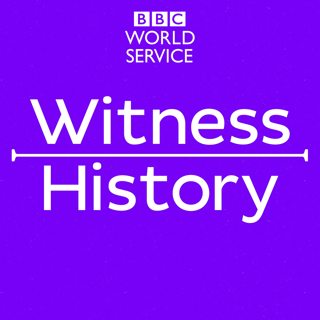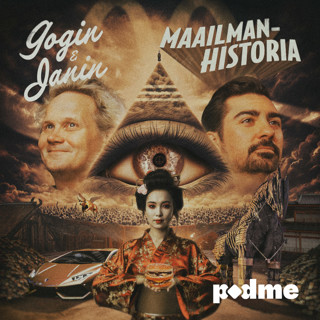
The Bombing Of Korean Flight 858
In November 1987 a South Korean airliner was blown out of the sky, killing 115 people on board. The attack on Korean Air flight 858 is believed to have been the work of agents of the North Korean regime, seeking to disrupt the Summer Olympics in Seoul. Pete Ross has been hearing from relatives of some of those who died that day, as well as from one of the bombers, the North Korean agent Kim Hyun-hui.(Photo: Former North Korean spy Kim Hyun-hui , who now lives in South Korea. Credit: Kim Kyung-Hoon/AFP/Getty Images)
9 Helmi 20189min

Spying On South Africa's Nuclear Bomb
During the Apartheid period, the South African government began developing a secret nuclear programme, culminating in the construction of six nuclear bombs. Anti-Apartheid campaigner, Renfrew Christie, first became aware of this when he was conscripted into the South African Army. He later gained access to details of the nuclear programme and passed them onto the military wing of the African National Congress, ANC. In 1979 Christie was arrested and later tortured. He spoke to Olga Smirnova about his hunt for South Africa's nuclear weapons and his ordeal in jail. Photo: A restricted area sign close to the Koeberg nuclear power station, South Africa (Getty Images)
8 Helmi 20189min

The Munich Air Disaster
In February 1958, eight players from Manchester United’s famous “Busby Babes” team were among those killed in a plane crash at Munich airport. Goalkeeper Harry Gregg survived the disaster and went back into the wreckage several times to save lives. Simon Watts hears his story.Photo: Plane wreckage at Munich airport (AFP/Getty Images)
7 Helmi 20188min

Women in Britain get the right to vote
On 6th February 1918, women in Britain were given the right to vote for the first time. The campaign for women's suffrage had begun decades earlier. But it wasn't until the final months of the First World War that the British parliament relented and said property-owning women over the age of 30 could vote in a general election. It would take another ten years before women got parity with men. Louise Hidalgo has been listening back to the voices of the women activists known as suffragettes, and talks to politician Shirley Williams, the daughter of an early feminist.Picture: suffragette leader Emmeline Pankhurst is arrested outside Buckingham Palace, 1914 (Credit: Jimmy Sime/Central Press/Hulton Archive/Getty Images)
6 Helmi 20188min

Bringing Nazi Leader Klaus Barbie To Justice
In February 1983 the man known as 'the butcher of Lyon' was extradited to France to face charges of murder and torture during World War Two. The former head of the Gestapo in Lyon was traced to South America by two Nazi-hunters, married couple Serge and Beate Klarsfeld. They have been telling their amazing story to Mike Lanchin.Photo: Klaus Barbie on his way to court in Lyon, France (AFP)
5 Helmi 20188min

Banning The Belt
In February 1982 the European Court of Human Rights ruled that Britain should end corporal punishment in state schools. The landmark decision came after a lawsuit launched by two mothers in Scotland. Mike Lanchin has been hearing from Andrew Campbell, the son of one of the women behind the campaign. Photo: A school teacher holds a belt or Tawse, used for punishing pupils (Alamy)
2 Helmi 20188min

The Roots of the Rohingya Crisis
In 2017, hundreds of thousands of Rohingya Muslims left their homes in Myanmar fleeing government persecution, in what the UN has called the world's fastest growing refugee crisis. Lucy Burns speaks to Rohingya historian and politician U Kyaw Min to explore the roots of the crisis - and a change in the Burmese citizenship laws in 1982 which left the Rohingyas essentially stateless.(Photo: Rohingya refugees walk near the no man's land area between Bangladesh and Myanmar in the Palongkhali area next to Ukhia on October 19, 2017. Credit: Munir Uz Zaman/AFP/Getty Images)
1 Helmi 20188min

Vietnam War: The Tet Offensive
In January 1968, North Vietnamese troops and Viet Cong guerrillas launched a huge surprise attack on towns, cities and military bases across South Vietnam. The American embassy and the Presidential Palace in Saigon was among the targets that were hit. The events had a profound impact on American public opinion and marked a turning point in the war. BBC reporter Julian Pettifer covered the battles in the South Vietnamese capital, Saigon. Photo: Julian Pettifer reporting under fire near the Presidential Palace in Saigon, 31st January 1968 (BBC)
31 Tammi 20189min





















